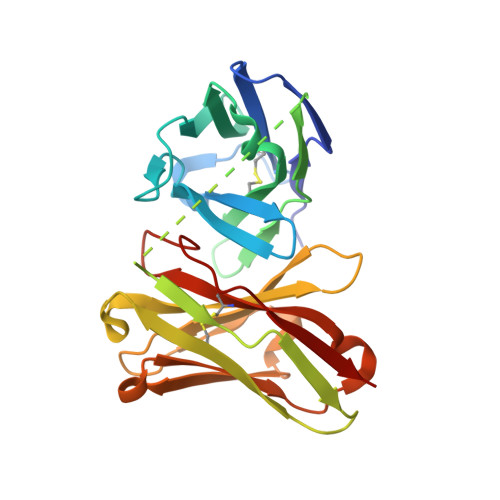Three-dimensional structure of a high affinity anti-(4-hydroxy-3-nitrophenyl)acetyl antibody possessing a glycine residue at position 95 of the heavy chain.
Nishiguchi, A., Numoto, N., Ito, N., Azuma, T., Oda, M.(2019) Mol Immunol 114: 545-552
- PubMed: 31521018
- DOI: https://doi.org/10.1016/j.molimm.2019.09.001
- Primary Citation of Related Structures:
6K4Z - PubMed Abstract:
Antibodies possessing high affinity and specificity are desired as therapeutic reagents and biosensor materials. Such antibodies are often obtained from immunized animals through the process referred to as affinity maturation where antibody affinity increases with time after immunization. Somatic hypermutation (SHM) was shown to be involved in this process; however, structural basis of affinity maturation has not well been understood yet. We analyzed the crystal structure of a high affinity anti-(4-hydroxy-3-nitrophenyl)acetyl antibody, C6, possessing Gly at position 95 of heavy chain and 17 amino acid replacements by SHM. Here, we discuss how the amino acid residues at position 95, introduced at a junction of V H and D H gene segments during gene-recombination, as well as those replaced by SHM contribute to increasing the affinity by comparing the C6 structure with that of a germline low affinity antibody, N1G9, possessing Tyr at position 95.
Organizational Affiliation:
Graduate School of Life and Environmental Sciences, Kyoto Prefectural University, 1-5 Hangi-cho, Shimogamo, Sakyo-ku, Kyoto, 606-8522, Japan.

















